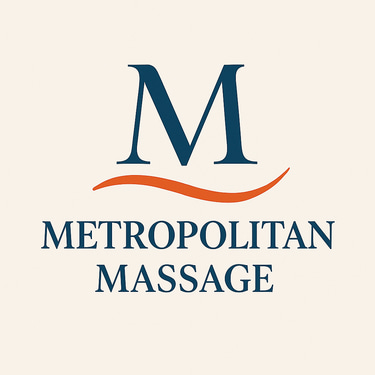What You Need to Know Before Hiring a Corporate Massage Provider
You’ve booked the venue. Finalized the food. Built out the agenda. But have you thought about how your employees feel at the event?


Planning a corporate event can feel like a balancing act: you’re trying to make it meaningful, energizing, and memorable—without losing sight of budget, logistics, or ROI. Somewhere between finalizing the venue and confirming the catering, one key piece often gets overlooked: massage.
That’s right—on-site massage isn’t just a luxury anymore. For companies serious about wellness, retention, and culture-building, it’s becoming a go-to feature at retreats, offsites, appreciation days, and team-building events.
But like any professional service, there’s more to it than just finding someone with a massage table and a good attitude. If you want your massage experience to be smooth, professional, and truly beneficial for your team, here’s what you need to know before you book.
1. The Value of Massage at Work Events
Massage therapy offers more than momentary relaxation—it delivers tangible psychological and physical benefits that can ripple through your organization. Numerous studies have shown that even short massage sessions can significantly reduce anxiety, muscle tension, and fatigue while boosting alertness and morale.
A study published in the International Journal of Neuroscience found that massage therapy over a five-week period reduced cortisol levels (the stress hormone) by up to 31% and increased serotonin and dopamine levels, which help stabilize mood and promote well-being.
For employers, this translates into more engaged employees, higher productivity, and a visible commitment to wellness—something that’s increasingly important in competitive hiring markets.
2. Start with Your Goals
Before hiring a massage provider, step back and ask yourself: What’s the purpose of adding massage to this event?
Are you trying to reward high-performing teams?
Create a relaxing wellness experience?
Boost attendance and engagement at a retreat or trade show?
The answers shape everything from the number of therapists you’ll need to the tone of the setup. A pop-up massage station at a busy networking mixer may only need 10-minute chair massages, while a half-day wellness retreat may benefit from longer, more private table massage sessions.
Getting clear on your goals helps you match the right provider and service model to your event’s vibe.
3. Know the Service Options
Not all massage experiences are created equal. Most corporate-friendly services fall into one of two categories:
Chair Massage: The most popular option for corporate events. Takes 10–20 minutes per person, requires very little space, and keeps employees fully clothed.
Table Massage: Ideal for wellness retreats or quieter, more intimate settings. Requires more space and time, and may be better suited for longer events or private breakout areas.
Another key consideration is mobile versus fixed setup. A reputable provider will bring all necessary equipment, including chairs, linens, and sanitizing supplies. They’ll also assess whether the event space is suitable for massage—especially if privacy or sound levels are a concern.
4. Ask the Right Questions
Here’s a shortlist of questions to ask any provider before you book:
Are your massage therapists licensed and insured?
How many therapists do you provide, and is there a minimum or maximum?
Do you specialize in corporate or high-volume events?
Do you manage all setup, scheduling, and breakdown?
What’s your cancellation or rescheduling policy?
Will someone be on-site to manage workflow or logistics?
These aren’t just formalities—they’re indicators of professionalism. A good provider won’t just send therapists; they’ll send a team that blends seamlessly into your event’s operations.
5. Timing and Volume Matters
The most common mistake companies make? Underestimating demand.
If massages are popular (and they usually are), you don’t want long lines or disappointed employees. A general rule of thumb: For every 15 employees per hour, plan to have one therapist available.
Let’s say you’re hosting a 3-hour event with 60 employees. You’ll want at least 3–4 therapists on-site to ensure everyone has a chance, even with short 10–15 minute sessions.
Also, factor in breaks and turnover time between clients. Most providers will help you design a schedule that maximizes flow and minimizes wait times.
6. Understand the Budget—and What It Covers
Corporate massage is surprisingly cost-effective, especially when compared to other event experiences like entertainment or catering. Expect to see rates priced by the hour, half-day, or full-day.
Key budget considerations:
Therapist rates (typically per hour or per therapist)
Travel fees, if your event is outside a service radius
Scheduling or coordination fees, if applicable
Watch out for hidden costs—if the price seems too low, it may not include setup, staffing, or even insurance. A well-organized provider will offer a clear, transparent quote and a straightforward service agreement.
7. Professionalism Over Everything
This part can’t be overstated: your massage provider represents your company during your event. That means they should be punctual, dressed appropriately, and able to read the room—whether it’s a buttoned-up finance firm or a laid-back creative agency.
Look for providers with:
Experience in professional or corporate settings
Clear communication throughout the planning process
The ability to adjust based on space, schedule, and vibe
In short, the massage should feel like part of your brand, not just a vendor add-on.
